Hamstring Injury Classification and Rehabilitation
Different types of injuries require different approaches. This article dives in hamstring injury classification and rehabilitation.

Introduction
The British Athletics Muscle Injury Classification describes an MRI classification system with clearly defined anatomically focused classes based on the site and the extent of the injury. Macdonald et al linked the specific muscle injury diagnosis with a focused rehabilitation program. Interested in learning about hamstring injury classification and rehabilitation? Read on!
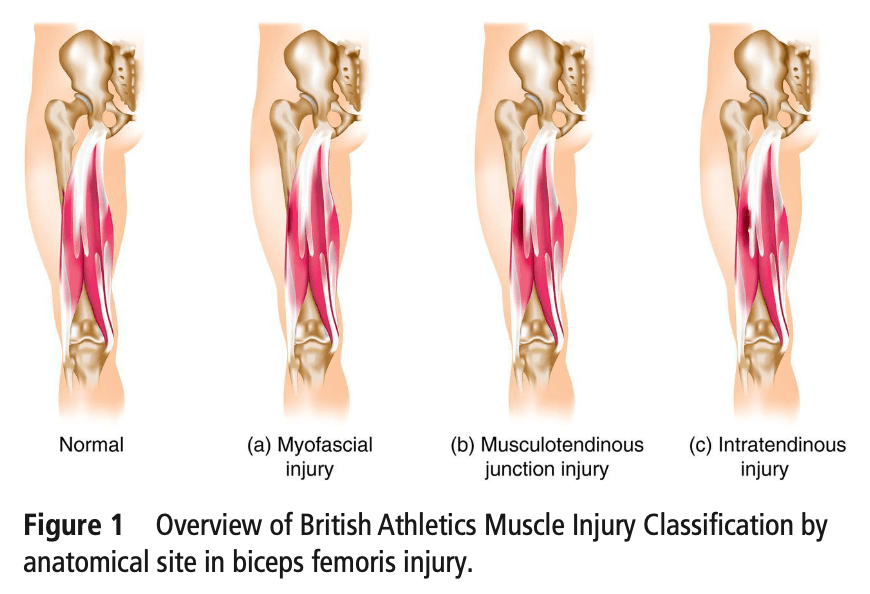
Injury Location and Rehabilitation
1. Myofascial Injuries
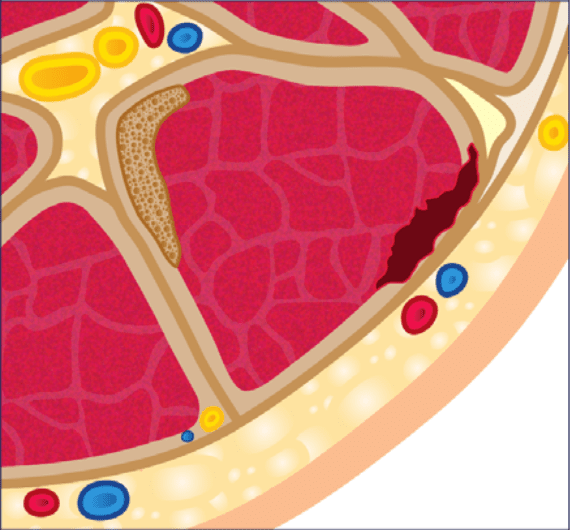
Clinical presentation
Myofascial injuries tend to occur with a sudden or gradual onset of posterior thigh pain during or after sports activities. Pain on manual muscle tests may be present, but strength and ROM are often maintained.
Healing process
The healing takes place through an initial inflammatory response, followed by a fibrotic stage. After approximately 3 weeks the healing scar tissue reaches maximal strength.
Running progressions
Running can be progressed relatively quickly and can be supported by oral analgesia or manual therapy. Running drills precede high-speed running and can be progressed in the presence of moderate pain levels (4-5/10 on VAS).
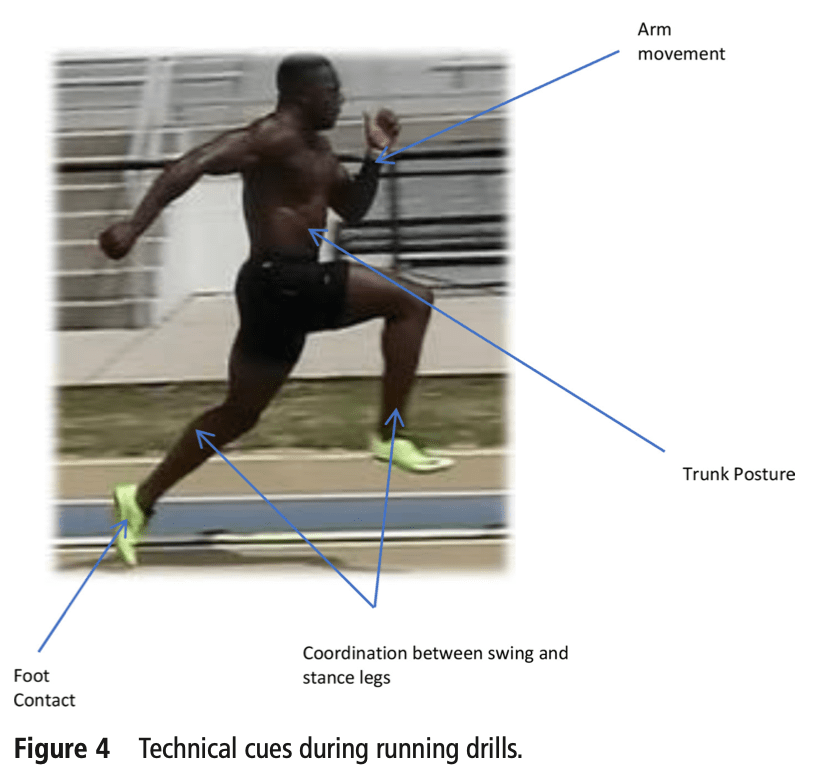
Strength training progressions
As the contractile element is intact, specific hamstring loading is not prioritized, but the emphasis should be on a return to the athlete’s normal strength training program.
2. Musculotendinous injuries
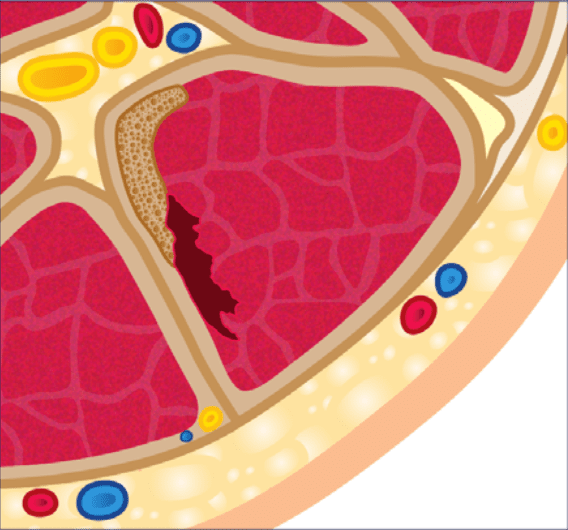
Clinical presentation
Musculotendinous injuries typically occur with a sudden onset during high-velocity sprinting or jumping. The muscles’ force-generating capacity is impaired and thus strength deficits may be noticed during manual muscle testing, together with pain and reduced ROM.
Healing process
The healing tissues take up 4 to 8 weeks as type 1 collagen is synthesized to allow myofibre regeneration.
Running progressions
As walking becomes pain-free, running drills may be initiated. Progressions are a bit more conservative compared to the progressions in myofascial injuries. Pain should be kept below 3 out of 10 on VAS) and more dynamic drills can be initiated as strength and ROM improves.
Strength training progressions
Strength training should include isometric and eccentric hip and knee dominant exercises. Initial exercise prescription is at higher volumes and lower load, with a gradual increase in load through rehabilitation as tissue tolerance improves. Increased load is accompanied by a reduction in strength training volume as running intensity/volume increases to achieve more performance-based goals. High-speed running is not recommended immediately or the day after heavy hamstring strength training.
3. Intratendinous injuries
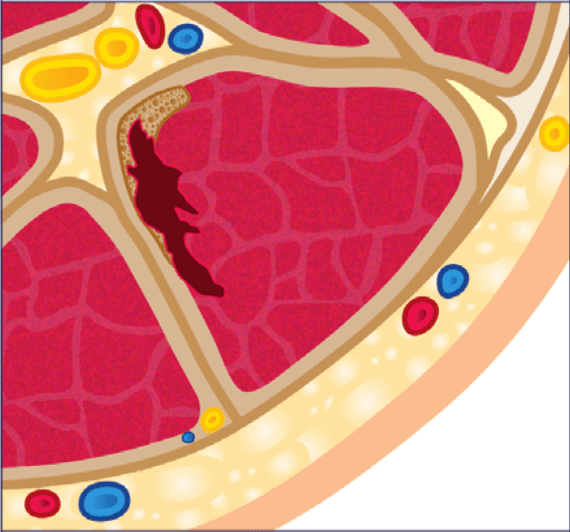
THE BIG 3 – ADVANCED REHABILITATION OF HAMSTRING, QUADRICEPS, AND CALF MUSCLE- AND TENDON INJURIES
Rehab & Performance Expert Enda King Reveals His Secrets to Rehab the 3 Most Common Muscle & Tendon Injuries
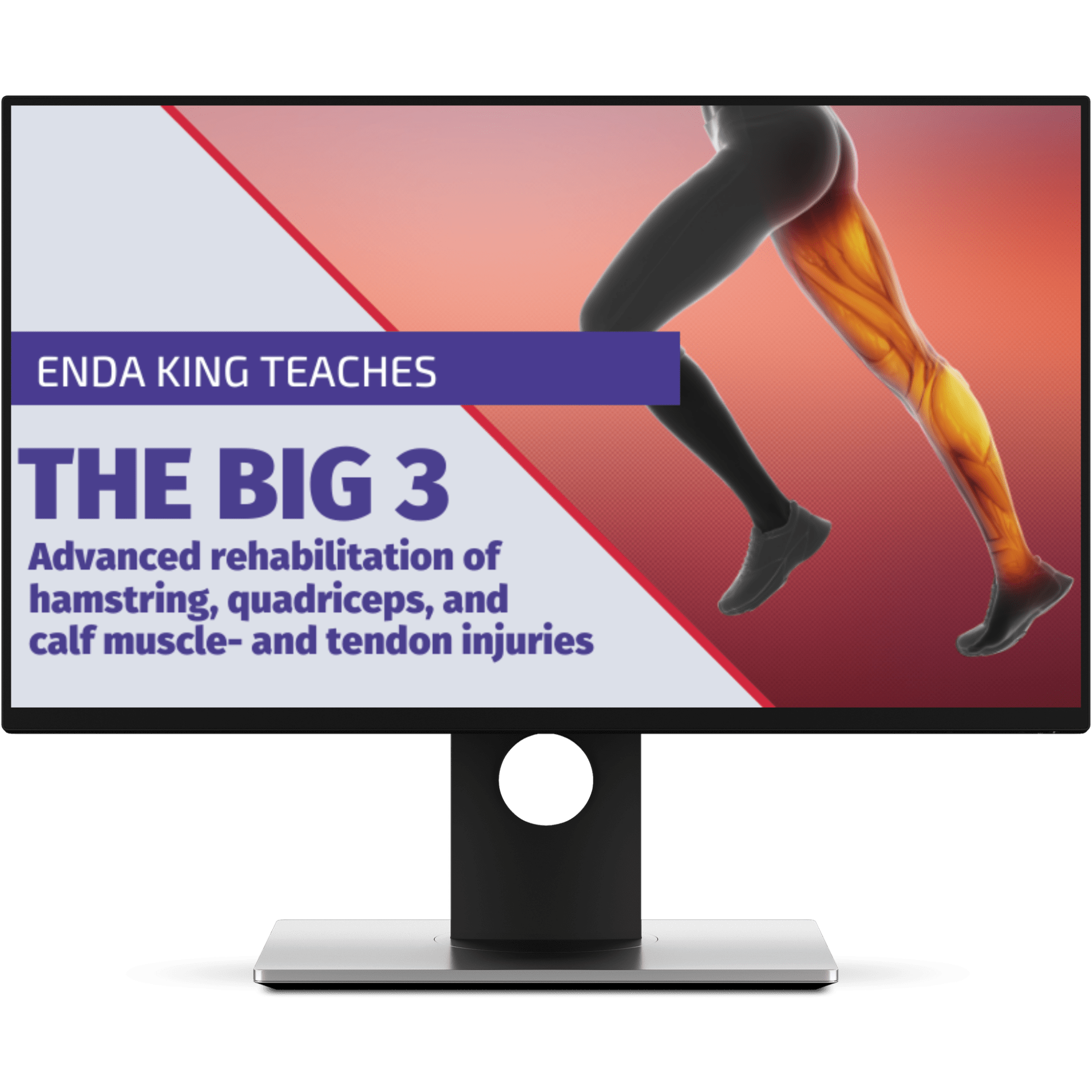
Clinical presentation
Tendinous injuries, like musculotendinous injuries, occur with a sudden onset, high-force mechanism. The patient can present with an antalgic gait and significant loss of strength and ROM.
Healing process
Healing of the tendon takes place at a slower pace as it requires collagen synthesis and remodeling to take place.
Running progressions
Due to slower tendon adaptation, a longer time is required to progress running. A gradual increase in training volume and intensity with enough time at each stage is required.
Strength training progressions
Eccentric loading should be delayed to avoid excessive strain on the healing tendon. It is recommended to keep training sessions separated by 36-72 hours to ensure tissue synthesis occurs rather than tissue degeneration. In case of a proximal injury, knee-dominant exercises should be initiated over hip-dominant exercises to avoid over-straining of the proximal injury site and this can be progressed to hip-dominant exercises later on.
In case of a proximal intratendinous injury, knee dominant exercises should be initiated over hip dominant exercises to avoid over-straining of the proximal injury site and this can be progressed to hip dominant exercises later on.
Return to full training
The complexity of testing increases with injury complexity. RTFT in myofascial injuries may be relatively soon and is based on clinical examination of ROM, strength, palpation pain, and Askling H-test, alongside the successful progression of running without exacerbation. Musculotendinous injuries require the same RTFT testing as myofascial injuries but should be completed with a thorough eccentric strength training assessment. In the case of tendinous injuries, a biomechanical analysis should be included to compare ground contact times and stride length to pre-injury values. A repeat MRI can be useful to provide additional information on the healing process. In all cases, the decision to RTFT should be made together with the coach and athlete.
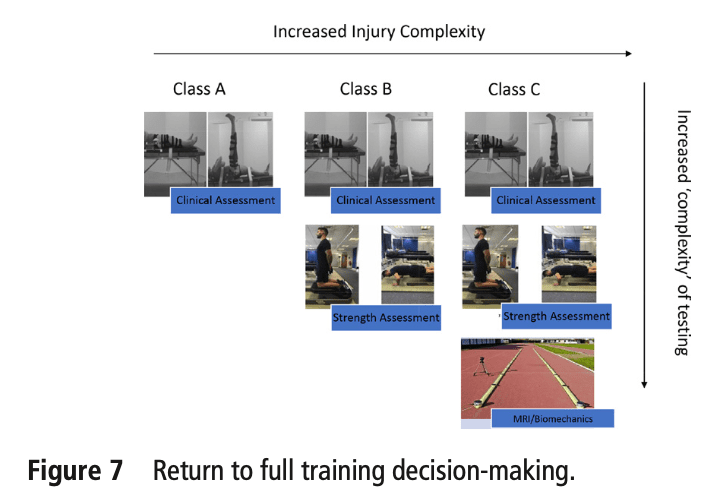
We hope you enjoyed this read on the hamstring injury classification and rehabilitation!
Ellen
Reference
Macdonald et al. (2019): https://pubmed.ncbi.nlm.nih.gov/31300391/

Ellen Vandyck
Research Manager
NEW BLOG ARTICLES IN YOUR INBOX
Subscribe now and receive a notification once the latest blog article is published.







